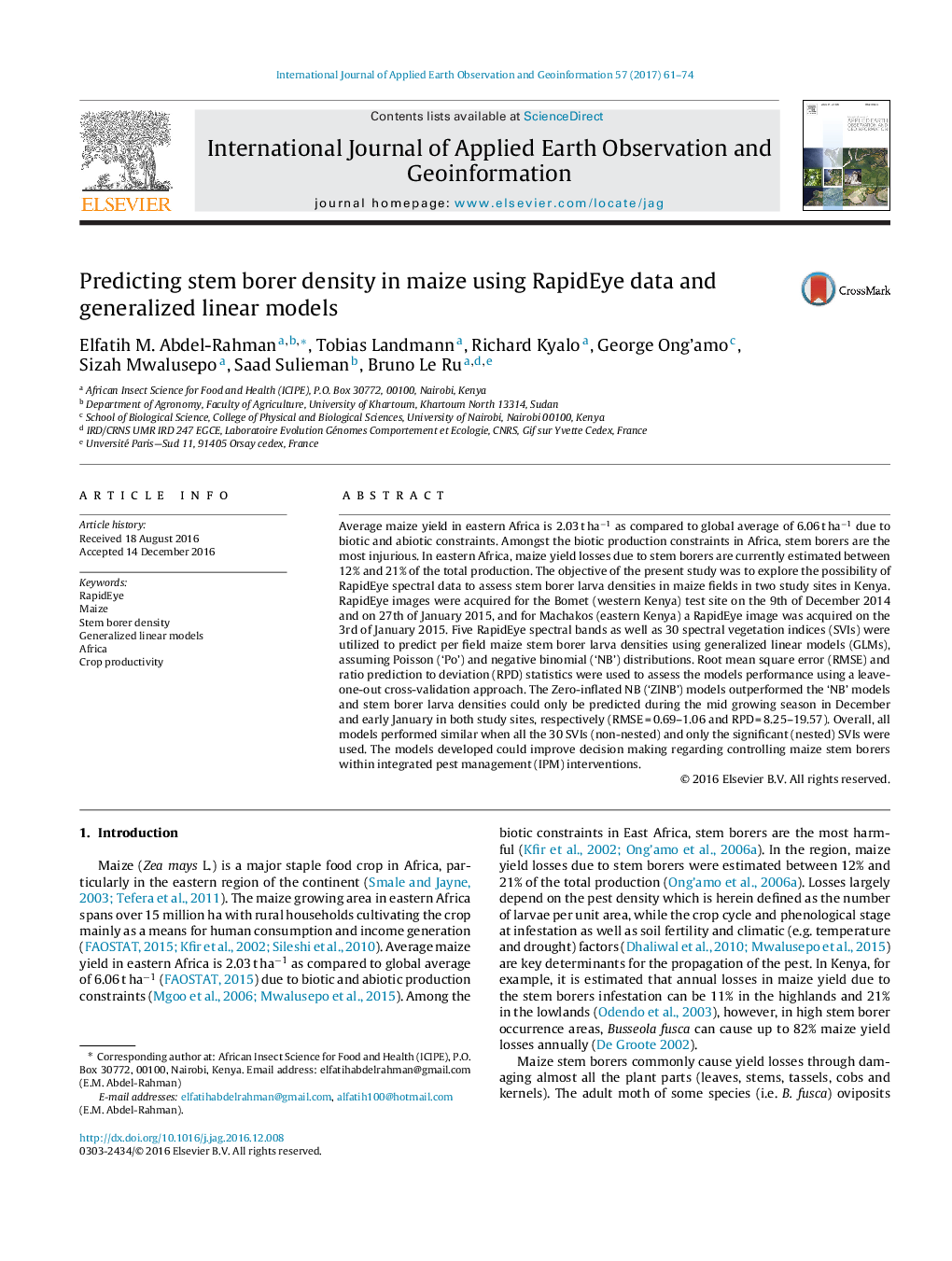| Article ID | Journal | Published Year | Pages | File Type |
|---|---|---|---|---|
| 5755551 | International Journal of Applied Earth Observation and Geoinformation | 2017 | 14 Pages |
Abstract
Average maize yield in eastern Africa is 2.03 t haâ1 as compared to global average of 6.06 t haâ1 due to biotic and abiotic constraints. Amongst the biotic production constraints in Africa, stem borers are the most injurious. In eastern Africa, maize yield losses due to stem borers are currently estimated between 12% and 21% of the total production. The objective of the present study was to explore the possibility of RapidEye spectral data to assess stem borer larva densities in maize fields in two study sites in Kenya. RapidEye images were acquired for the Bomet (western Kenya) test site on the 9th of December 2014 and on 27th of January 2015, and for Machakos (eastern Kenya) a RapidEye image was acquired on the 3rd of January 2015. Five RapidEye spectral bands as well as 30 spectral vegetation indices (SVIs) were utilized to predict per field maize stem borer larva densities using generalized linear models (GLMs), assuming Poisson ('Po') and negative binomial ('NB') distributions. Root mean square error (RMSE) and ratio prediction to deviation (RPD) statistics were used to assess the models performance using a leave-one-out cross-validation approach. The Zero-inflated NB ('ZINB') models outperformed the 'NB' models and stem borer larva densities could only be predicted during the mid growing season in December and early January in both study sites, respectively (RMSE = 0.69-1.06 and RPD = 8.25-19.57). Overall, all models performed similar when all the 30 SVIs (non-nested) and only the significant (nested) SVIs were used. The models developed could improve decision making regarding controlling maize stem borers within integrated pest management (IPM) interventions.
Related Topics
Physical Sciences and Engineering
Earth and Planetary Sciences
Computers in Earth Sciences
Authors
Elfatih M. Abdel-Rahman, Tobias Landmann, Richard Kyalo, George Ong'amo, Sizah Mwalusepo, Saad Sulieman, Bruno Le Ru,
